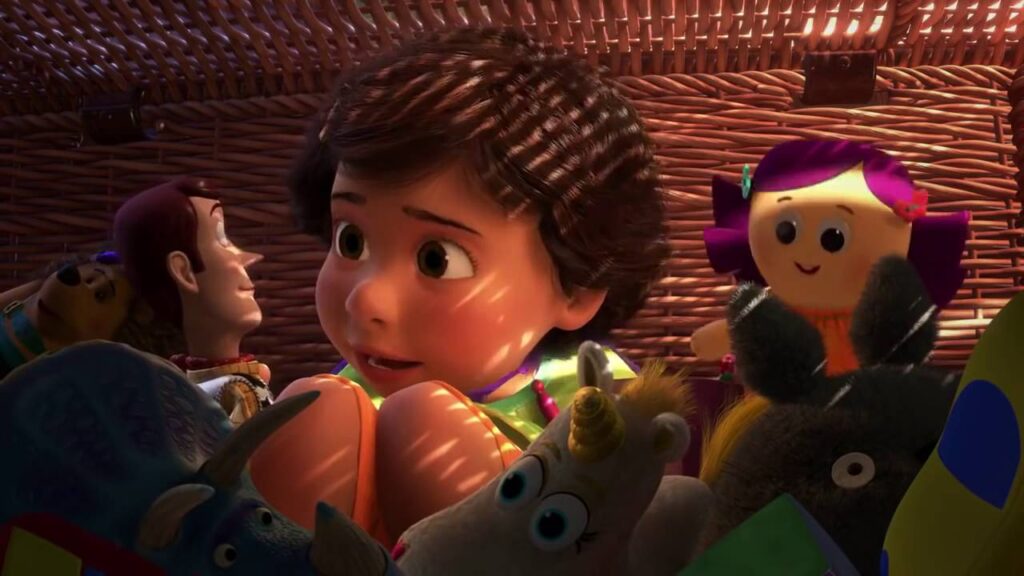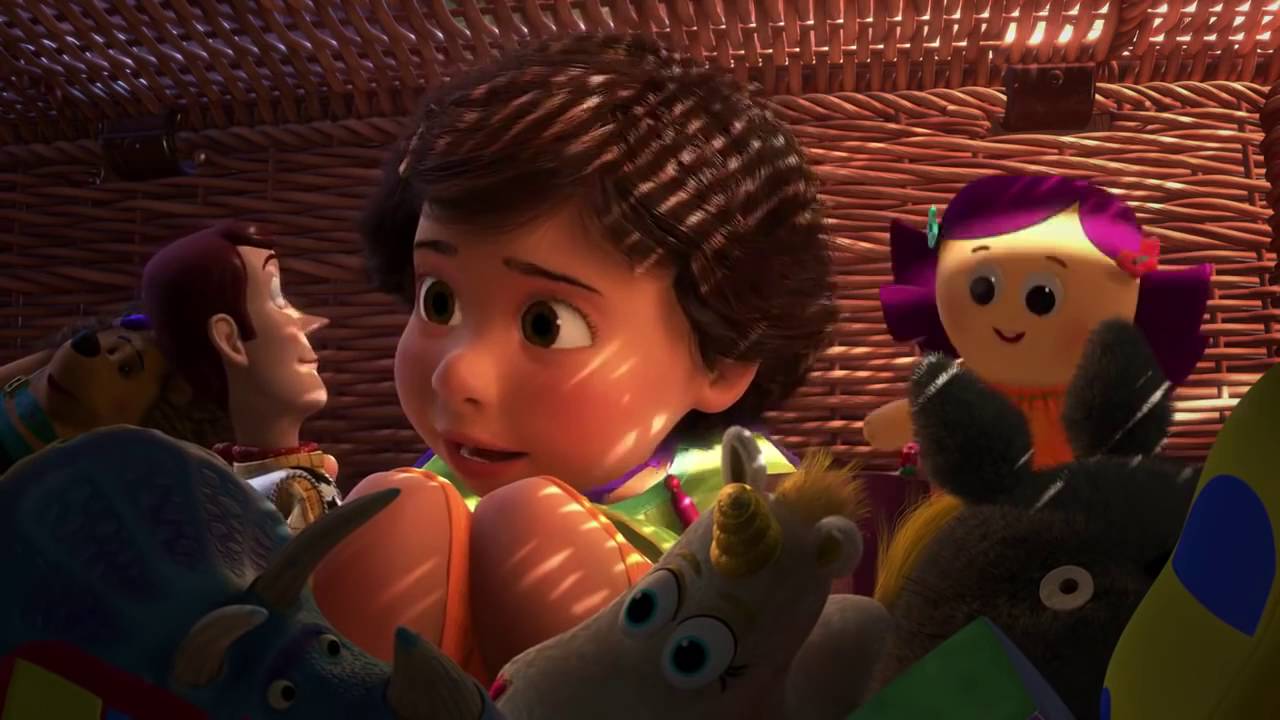
Toy Story with Bonnie: Exploring the Evolution of Childhood and Imagination
The Toy Story franchise has captivated audiences for generations, not just for its heartwarming stories and innovative animation, but also for its insightful portrayal of childhood. A significant chapter in this saga is the introduction of Bonnie Anderson, a young girl who becomes the new owner of Woody, Buzz Lightyear, and the rest of Andy’s beloved toys. This article delves into the impact of Toy Story with Bonnie, examining how her character reshapes the narrative and reflects evolving perspectives on play, imagination, and the transition between childhood and adulthood.
Bonnie’s Role in the Toy Story Universe
Bonnie’s introduction in Toy Story 3 marks a pivotal moment. Andy, preparing for college, recognizes Bonnie’s genuine love for toys and entrusts his cherished companions to her care. This act symbolizes the passing of the torch, a recognition that toys deserve to be loved and played with, not simply stored away. Toy Story with Bonnie allows the franchise to explore new themes and perspectives, shifting the focus from Andy’s experiences to a younger generation’s.
Unlike Andy, who had a more traditional, structured approach to playtime, Bonnie’s imagination knows no bounds. She imbues her toys with distinct personalities and creates elaborate scenarios, showcasing the boundless creativity of a child. This difference in play style highlights the evolving nature of childhood and the importance of fostering imaginative play.
The Importance of Imaginative Play
Toy Story with Bonnie underscores the significance of imaginative play in a child’s development. Bonnie’s ability to create rich narratives and give her toys unique identities demonstrates the power of play to foster creativity, problem-solving skills, and emotional intelligence. Through her interactions with the toys, Bonnie learns to navigate social situations, express her emotions, and develop a sense of empathy.
Furthermore, Bonnie’s play style challenges traditional gender roles and expectations. She doesn’t adhere to stereotypical notions of how girls should play, instead embracing a wide range of characters and scenarios. This inclusivity reflects a more progressive understanding of childhood and the importance of allowing children to explore their identities without limitations.
Forky and the Existential Crisis of a Toy
One of the most compelling aspects of Toy Story with Bonnie is the introduction of Forky in Toy Story 4. Forky, a spork brought to life by Bonnie’s imagination during kindergarten orientation, represents the raw, unfiltered essence of childhood creativity. He’s not a traditional toy, but Bonnie loves him unconditionally, highlighting the arbitrary nature of affection and the power of imagination to transform the mundane into something extraordinary.
Forky’s existential crisis – his struggle to understand his purpose and identity as a toy – provides a deeper exploration of the themes of belonging, self-worth, and the transient nature of childhood. Woody’s unwavering dedication to Forky reflects his commitment to Bonnie’s happiness and his own evolving understanding of what it means to be a toy. He learns to accept that a toy’s purpose is not solely defined by its owner but also by its own internal journey and growth.
Woody’s Transition and Legacy
Toy Story with Bonnie plays a crucial role in Woody’s character arc. As Bonnie’s playtime evolves, Woody begins to question his own relevance and purpose. He realizes that his primary responsibility is no longer to be the center of attention but to ensure Bonnie’s happiness and the well-being of all the toys.
Ultimately, Woody’s decision to leave Bonnie and join Bo Peep at the end of Toy Story 4 marks a significant turning point. He embraces a new chapter in his life, prioritizing his own happiness and autonomy while trusting that Bonnie will continue to thrive without him. This decision reinforces the theme of letting go and accepting change, a universal experience that resonates with audiences of all ages.
The Impact on the Toy Story Franchise
The introduction of Toy Story with Bonnie revitalized the Toy Story franchise, injecting fresh perspectives and themes into the narrative. Her character allows the films to explore new aspects of childhood, imagination, and the evolving relationship between children and their toys.
Furthermore, Bonnie’s presence expands the franchise’s appeal to a younger generation. Children can relate to her playful spirit and imaginative adventures, while adults can appreciate the film’s insightful commentary on the complexities of childhood and the importance of preserving the magic of play. Toy Story with Bonnie demonstrates the enduring power of the Toy Story franchise to connect with audiences across generations.
Exploring New Themes
Toy Story 3 and Toy Story 4, heavily featuring Toy Story with Bonnie, delve into themes of loss, transition, and self-discovery. Andy’s departure for college and Woody’s eventual separation from Bonnie represent significant milestones in the characters’ lives, forcing them to confront their own mortality and the inevitable changes that come with time.
The films also explore the theme of found family, highlighting the importance of friendship and loyalty in navigating life’s challenges. The toys’ unwavering support for each other, even in the face of adversity, underscores the power of community and the enduring bonds that can be forged through shared experiences. Toy Story with Bonnie‘s interactions with the toys emphasize the reciprocal nature of these relationships, demonstrating how both children and toys can learn and grow from each other.
Bonnie’s Influence on Toy Design and Marketing
The popularity of Toy Story with Bonnie has undoubtedly influenced toy design and marketing trends. Toy manufacturers have responded to the demand for toys that encourage imaginative play and creativity, offering a wide range of products that allow children to create their own stories and scenarios.
Furthermore, the success of characters like Forky demonstrates the appeal of unconventional toys that challenge traditional notions of beauty and perfection. This trend reflects a broader cultural shift towards embracing individuality and celebrating the unique qualities that make each person – and each toy – special. The impact of Toy Story with Bonnie can be seen in the increasing diversity and inclusivity of toy offerings, reflecting a more progressive and representative view of childhood.
The Future of Toy Story
While the future of the Toy Story franchise remains uncertain, the impact of Toy Story with Bonnie is undeniable. Her character has enriched the narrative, expanded the franchise’s appeal, and influenced the toy industry as a whole. Whether or not there are future installments, Bonnie’s legacy will continue to resonate with audiences for years to come.
The ongoing exploration of themes like childhood imagination, the evolving role of toys, and the importance of embracing change ensures that Toy Story remains relevant and engaging for generations to come. The story of Toy Story with Bonnie is a testament to the enduring power of storytelling to connect with audiences on an emotional level and to provide insightful commentary on the human experience.
In conclusion, Toy Story with Bonnie represents a significant chapter in the Toy Story saga. Her character embodies the spirit of childhood imagination, challenges traditional notions of play, and contributes to the franchise’s ongoing exploration of universal themes. As audiences continue to cherish the stories of Woody, Buzz, and the rest of the toys, Bonnie’s role in shaping their journey will undoubtedly be remembered as a pivotal moment in the history of animation.
[See also: The Evolution of Woody’s Character in Toy Story]
[See also: The Enduring Appeal of Pixar Animation Studios]

